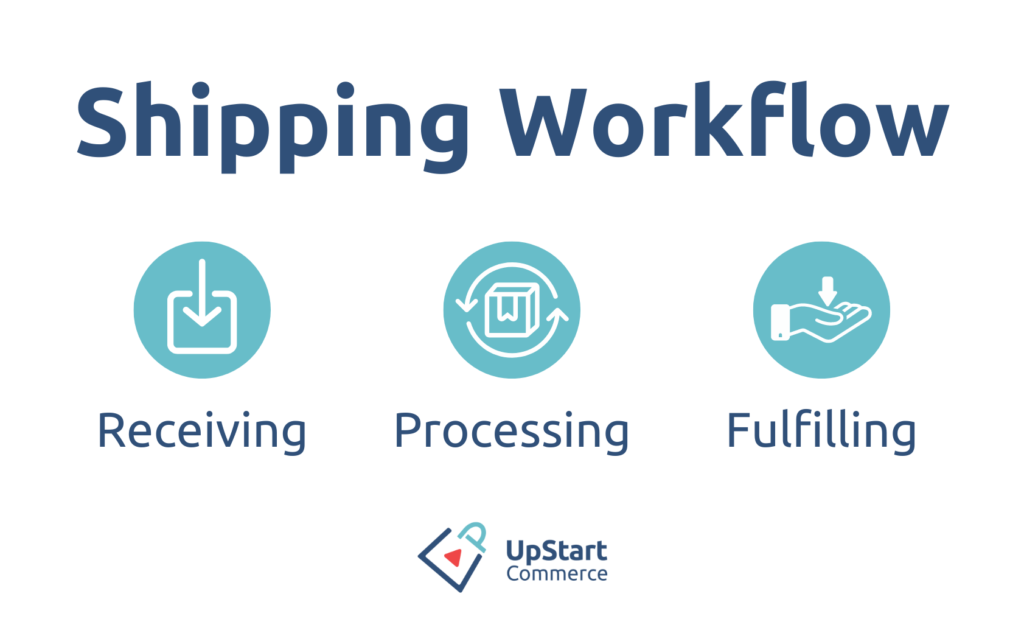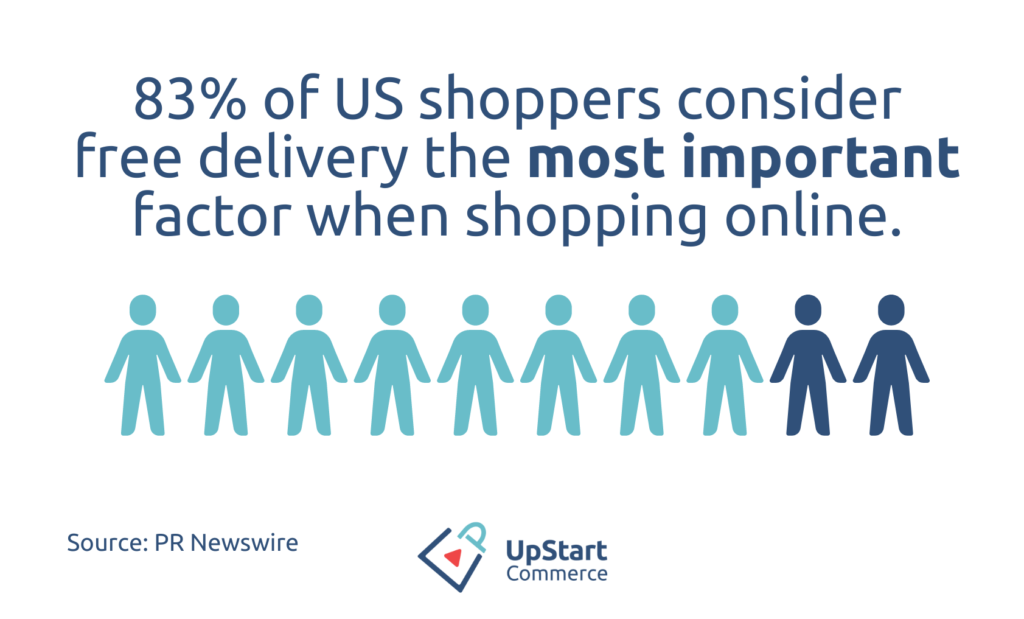Online consumers trust ecommerce retailers to efficiently handle order shipping. Therefore, ecommerce retailers need to spend time ensuring their shipping options meet customer expectations. A good shipping strategy can build customer loyalty and increase profit margins.
During 2022, many retailers faced shipping issues. As ecommerce retailers adapted to these issues, customer expectations increased. A report by CSCMP’s Supply Chain Quarterly suggests that 62% of ecommerce shoppers expect businesses to deliver their orders within two to three business days with the free delivery option. Stepping into 2023, businesses must meet the shipping expectations of customers to increase customer loyalty.
However, ecommerce shipping strategies require more than simply picking different delivery speeds. A well-executed shipping strategy has clear roles that outline the process for executing the plan while also keeping revenue in mind. To have a successful shipping strategy, it’s important to have the necessary steps in place for receiving, processing, and fulfilling.

Amazon-Inspired Shipping Strategies
Statista concluded that 79.8% of customers use Amazon because order deliveries are fast and free. To survive the highly competitive market in 2023, businesses need to look at Amazon’s delivery services as a model for their own shipping strategies.
Amazon Prime Delivery is a compelling offer for customers that ships orders in two-days for free. Their predictable delivery methods demonstrate how meeting customer expectations with shipping options retains loyal customers. Without a clear shipping strategy for 2023, ecommerce businesses risk creating chaos in their delivery process. An efficient shipping process is a cornerstone of the success of any online retail business.
Here are tips to help increase customer loyalty through efficient shipping options.
Ecommerce Shipping Options That Meet Expectations
Consumer expectations for fast and convenient shipping are constantly increasing. According to a blog by Ship Hero, 32% of customers abandoned their carts due to long delivery times. Offering customers the option for quick shipping, even at an increased price, is one way to stand out from competitors. Consider the following shipping options when trying to meet customer expectations:
Same and Next-Day Delivery Options
Same and next-day delivery options have grown in popularity among online shoppers. 56% of consumers expect their orders to arrive within the same day, according to a blog by Invesp. Modern consumers are looking for instant gratification and the convenience of receiving their purchases as soon as possible. To stay competitive in the ecommerce market and meet these expectations, it is important for ecommerce businesses to offer same and next-day delivery options if possible. Implementing these two options can increase brand loyalty, helping to drive sales and stand out from competitors. However, there are complex logistics and costs associated with offering quick turnaround delivery options
Free and Low-Cost Shipping Options
Meanwhile, 83% of US shoppers consider free delivery as the most important factor when ordering online according to a news release by PR Newswire. Offering free or low-cost shipping options has several benefits, including increased conversion rates, improved customer loyalty, higher average order value, and reduced ecommerce cart abandonment. Additionally, offering multiple shipping options can increase customer satisfaction. When selecting free or low-cost shipping, many shoppers are willing to have slower shipping times.

There are many benefits to free and low-cost shipping options:
- Increases conversion rates
- Strengthens brand loyalty
- Increases customer retention rate
- Boosts the average order value (AOV).
- Maintains an advantage over competitors
Offer International Shipping Options
In today’s world, ecommerce retailers need to offer options for international shipping if they want to scale globally. Quickly understanding the market needs and offering international delivery methods gives businesses a competitive advantage when scaling their brand.
3 popular international shipping solutions:
- DHL – known for its global reach and expertise in international shipping. DHL provides export and import rates, as well as transit times, through its Rate Quote and Transit Time tool.
- Royal Mail – UK-based company that delivers letters and parcels both domestically and internationally.
- DPD – offers an extensive UK network and ground-based service to Europe.
Display Multiple US Carriers
Research from Retail Week found customers want to have a variety of available delivery options. Therefore, offering multiple shipping options increases the chances that a website visitor can find and select a shipping method that is suitable to their needs. This decreases abandonment rates and increases conversion rates.
In the US, there are several shipping carriers that can play a role in an ecommerce shipping strategy.
3 popular US shipping carriers:
- United States Postal Service (USPS) – known for its efficient last-mile delivery, USPS is often the most cost-effective option for ground shipping.
- FedEx – offers a wide range of delivery options, with a program specifically for small businesses.
- UPS – provides a variety of shipping services, including pickup scheduling and customer return management. It also has a program for small businesses.
Read more: “Increasing Customer Satisfaction With Ecommerce Returns Solutions”
Sustainable Shipping Methods
Sustainability is a growing demand from consumers. Also, a survey by Sifted, found 82% of respondents would prefer to wait an extra day for eco-friendly shipping, reinforcing the importance of sustainable shipping options in the future. Giving customers this option can improve their ecommerce shipping experience with a brand.
Here is how to build loyal customer relationships by practicing sustainable shipping options:
Focus on Reducing Carbon Emissions
Offering environmentally friendly shipping practices benefits the ecosystem and builds customer loyalty. A report by EPA, the US Environmental Protection Agency, found that shipping accounts for over 29% of the total greenhouse gasses. Therefore, calculating your carbon footprint and taking steps to reduce it shows that your brand prioritizes the environment and encourages customer loyalty. Environmentally conscious consumers become loyal customers to brands that proudly display a commitment to sustainable shipping practices and decreasing carbon emissions.
Eco-friendly Sustainable Shipping Packaging and Methods
Eco-friendly shipping packaging uses sustainable materials and methods for packaging and shipping products. These strategies aim to reduce waste, carbon footprint, and environmental impact caused by traditional shipping methods. Eco-friendly packaging range from biodegradable, recycled, and reusable packaging materials.
Eco-friendly shipping strategies:
- Provide customers an option to offset carbon emissions at checkout
- Minimize package sizes
- Offer a sustainable return program
- Prioritize ground shipping
- Use packaging materials that are recyclable
Implementing eco-friendly shipping packaging not only benefits the environment but also attracts conscious consumers who are willing to support brands that prioritize sustainability.
Read more: “Ecommerce Solutions to Reduce Holiday Returns”
Technology-Driven Shipping Solutions
Technology has completely changed the way our world works. Similarly, it has created a huge impact on shipping solutions. Ecommerce brands can utilize AI and ML-powered tools to optimize routes and gain real-time data insights. Additionally, offering contactless delivery options is crucial in the post-COVID world. Contactless delivery provides convenient, low-risk delivery. AR also plays a significant role in increasing shipping efficiency and productivity. 3D models of shipping vehicles can be used to identify strengths and weaknesses before making necessary improvements.
Your shipping process can include a roadmap to adopt technology-driven strategies.
Optimize Routes with AI and ML
According to TechCrunch, Amazon launched AWS Supply Chain to improve supply chain visibility and reduce supply chain risks.
Brands can use AI and ML tools to identify patterns in delivery data including traffic conditions, delivery times, and shipping routes. Then, they can use the information to select efficient delivery routes when giving ecommerce consumers different shipping options. The tools also take into account variables like road conditions, weather, and delivery times to deliver orders on time. AI and ML tools reduce shipping costs, improve delivery times, and provide a better overall customer experience during the last mile.
Offer Contactless Delivery
In a post-COVID pandemic world, contactless delivery is still essential. According to Get App, a software solutions provider, 67% of customers consider contactless home delivery as an important part of a positive customer experience, even in the post-COVID world.
Benefits of contactless delivery include:
- Customer convenience
- Low risk of spreading an illness
- Contactless payments increase payment options
- Increases online reviews
Integrate Augmented Reality
Augmented reality(AR) increases the efficiency and productivity of shipping operations. AR combines the digital and real worlds and uses 3D models of shipping vehicles to identify strengths and weaknesses. Then, companies can target key weaknesses and make improvements before a detrimental occurrence happens and delays shipping times.
Conclusion
The ecommerce logistics market is projected to $1901 billion by 2030. To keep up with growing consumer demands, trends, and competitors, ecommerce brands need to focus on providing quick and reliable shipping options. This includes offering same-day or next-day delivery options, as well as low cost or free shipping options to meet a wide range of customer expectations.
It is also important to implement sustainable shipping methods to build a loyal customer base. Using the latest technology solutions can help retailers stay ahead of their competition and create unique shipping experiences. To stay ahead of the latest shipping trends, continuously study the market and find innovative solutions that cater to customer demands.
Looking for shipping solutions? Connect the support services of UpStart Commerce and get started today.
